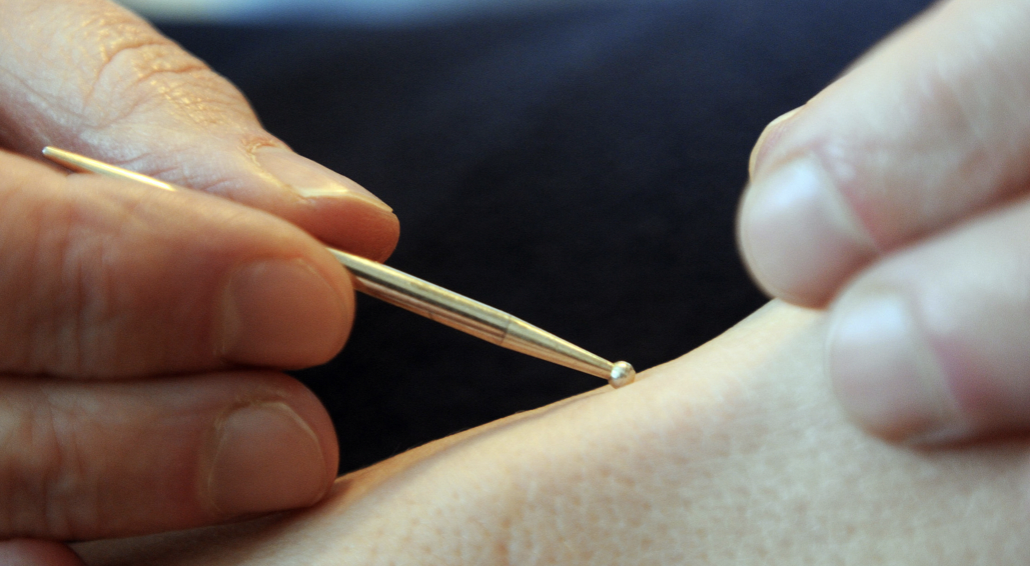
My Acupuncture Journey
Join me on a path to harmony, where each needle guides you toward a more vibrant and centered self.
Asifa Gill, R.Ac, completed her education at the Eight Branches College of Eastern Medicine in Toronto, earning a Diploma in Acupuncture and Moxibustion, encompassing more than 2,000 hours of training in acupuncture, Eastern nutrition, Tuina, cosmetic acupuncture and biomedical sciences. In her first year of studies, she pursued advanced studies with distinguished Japanese acupuncturists Takamasa Tsurusaki.
Specializing in a distinctive Japanese acupuncture style developed by Mitsunori Seino, Asifa's approach integrates a unique form of abdominal (hara) diagnosis along with gentle acupuncture and moxibustion techniques.
As a registered practitioner with the College of Traditional Chinese Medicine Practitioners and Acupuncturists of Ontario (CTCMPAO), Asifa brings a wealth of diverse clinical experience, allowing her to effectively address a wide range of health conditions.
Japanese acupuncture is known for its gentle and precise techniques that can be highly effective in treating various health conditions.
Interest and Study: I have a personal interest in Japanese culture, philosophy, or traditional healing practices, leading her to explore Japanese acupuncture techniques. I have pursued specialized mentorship in this style to deepen her understanding and skillset.
Patient Preference: Some patients prefer Japanese acupuncture due to its gentle needling techniques and emphasis on holistic diagnosis.
Unique Approach: Mitsunori Seino's style of Japanese acupuncture, with its integration of abdominal diagnosis and gentle techniques, offers a unique approach to treatment. I have been drawn to this distinctive approach and its potential to provide comprehensive care to her patients.
Overall, my decision to specialize in Japanese acupuncture stems from a combination of factors, effectiveness, personal interests, patient preferences, and professional growth opportunities.
-

Needling
Moxibustion is a traditional Chinese medicine technique that involves the burning of mugwort (Artemisia vulgaris) to stimulate acupuncture points. Rice grain moxa refers to a small piece of moxa, about the size of a rice grain, that is placed directly on the skin or on top of an acupuncture needle and then ignited.
-

Moxabustion
Moxibustion is a traditional Chinese medicine technique that involves the burning of mugwort (Artemisia vulgaris) to stimulate acupuncture points. Rice grain moxa refers to a small piece of moxa, about the size of a rice grain, that is placed directly on the skin or on top of an acupuncture needle and then ignited.
-

Anma or Tunia
What should we know about the services you provide? Better descriptions result in more sales.
-

Cupping
What should we know about the services you provide? Better descriptions result in more sales.
-

Cosmetic Acupuncture
Description goes here -

LED therapy
Description goes here -

Ear Acupuncture
Description goes here -

Hara abdomen diagnosis
Description goes here
FAQ’s
-
Acupuncture is known to effectively treat a wide range of conditions, including chronic pain, stress, anxiety, insomnia, headaches, migraines, digestive issues, and even fertility problems.
-
Yes, acupuncture is generally considered safe when performed by a qualified and licensed practitioner using sterile needles. Side effects are minimal and rare, such as bruising or slight bleeding at the insertion site
-
Acupuncture works by stimulating specific points on the body, known as acupoints, which correspond to pathways called meridians. This stimulation helps to regulate the flow of energy (Qi) throughout the body, promoting balance and facilitating the body's natural healing processes
-
The number of sessions needed varies depending on the individual and the condition being treated. Acute conditions may require fewer sessions, while chronic conditions may necessitate a series of treatments over time
-
Acupuncture is generally painless, with most people experiencing minimal discomfort during needle insertion. Sensations may vary from person to person, but any discomfort is typically brief and mild.
-
Side effects of acupuncture are rare but may include minor bruising, soreness, or bleeding at the needle insertion sites. Serious adverse effects are extremely uncommon when acupuncture is performed by a qualified practitioner.
-
The duration of acupuncture effects varies depending on the individual and the condition being treated. Some people experience immediate relief, while others may notice gradual improvements over time. Maintenance sessions may be recommended to prolong the benefits.
-
Acupuncture is often used as a complementary therapy for fertility issues, as it can help regulate hormones, reduce stress, and improve blood flow to the reproductive organs. Many individuals have found acupuncture supportive in their fertility journey.
-
During an acupuncture session, you can expect to lie comfortably on a treatment table while the acupuncturist inserts thin needles into specific acupoints on your body. You may feel a gentle sensation or nothing at all during needle insertion. The needles are typically left in place for about 20-30 minutes before being removed
BOOK YOUR FREE 15 min. CONSULTATION.
A 15-minute complimentary consultation for acupuncture typically serves as an initial meeting between the acupuncturist and the potential patient. During this brief session, the acupuncturist aims to gather relevant information about the patient's health concerns, medical history, and treatment goals. Here's what you can generally expect during such a consultation.



